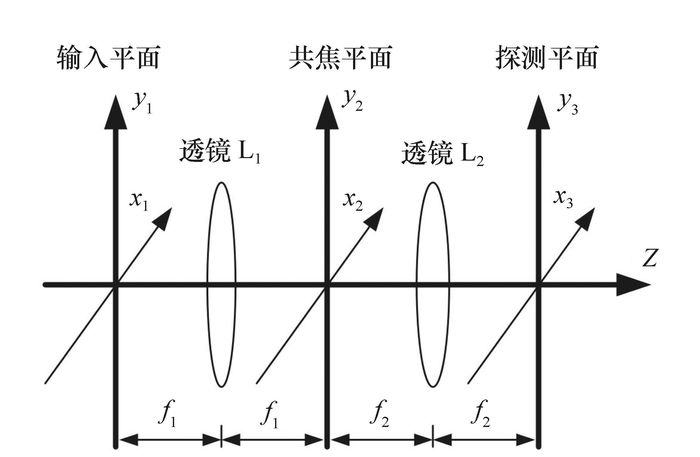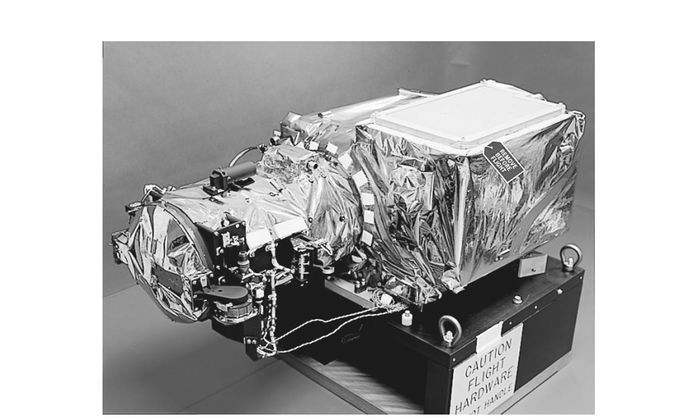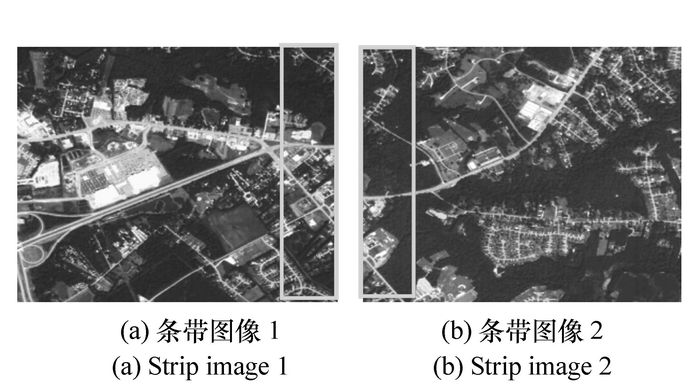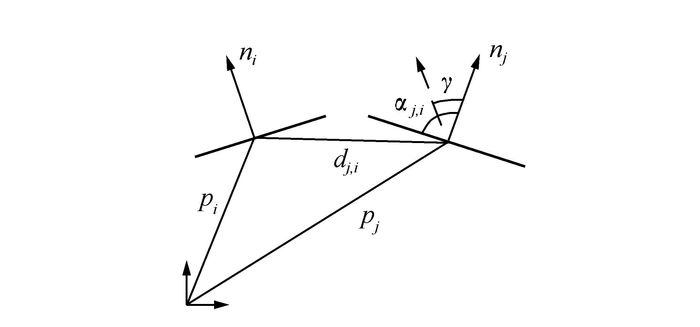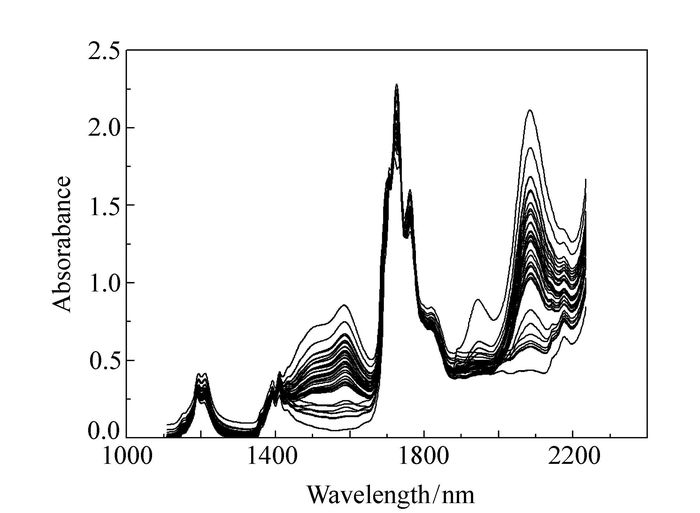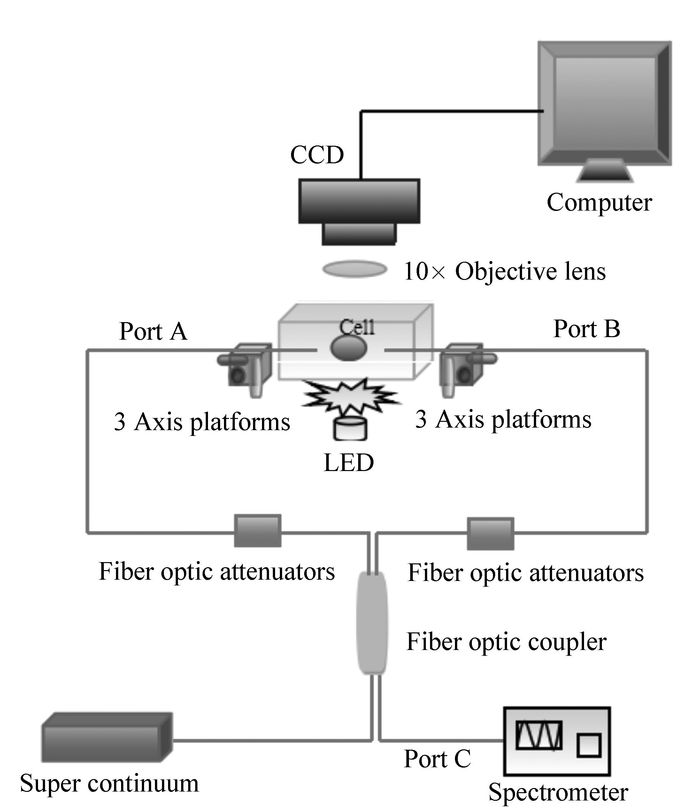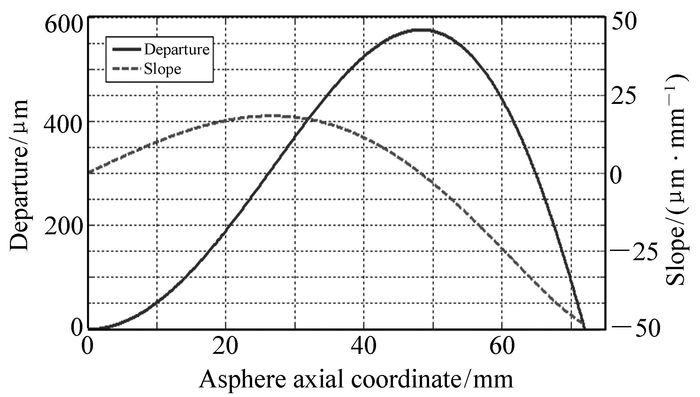2017 Vol. 10, No. 3
2017, 10(3): 283-299.
doi: 10.3788/CO.20171003.0283
Abstract:
With great degrees of freedom, optical free form surfaces would provide the axial aberrations and off axis ones. Meanwhile, they meet requirements of modern optical systems in high-performance, light weight and micromation, and gradually becomes the hot topic in modern optical engineering. However, their applications have been limited by testing technology of optical free form surface. Most testing methods are still follow those of aspheric surfaces yet. In this paper, we introduce the mathematic description, fabrication and testing of free-form surfaces, especially focusing on several non-contact metrology, such as micro-lenses methods, 3D test with structured light, coherence tomography and interferometry. The technique difficult and development tendency stressing on flexible compensation for rotationally asymmetric aberration and subaperture stitching based on retrace error correction of the regional aberration are introduced as well.
With great degrees of freedom, optical free form surfaces would provide the axial aberrations and off axis ones. Meanwhile, they meet requirements of modern optical systems in high-performance, light weight and micromation, and gradually becomes the hot topic in modern optical engineering. However, their applications have been limited by testing technology of optical free form surface. Most testing methods are still follow those of aspheric surfaces yet. In this paper, we introduce the mathematic description, fabrication and testing of free-form surfaces, especially focusing on several non-contact metrology, such as micro-lenses methods, 3D test with structured light, coherence tomography and interferometry. The technique difficult and development tendency stressing on flexible compensation for rotationally asymmetric aberration and subaperture stitching based on retrace error correction of the regional aberration are introduced as well.
2017, 10(3): 300-309.
doi: 10.3788/CO.20171003.0300
Abstract:
Shearography is an optical non-destructive measurement method for defects detection without contacting objects. Using this method we can obtain the information of defects by calculating phases of speckle pattern of the object before and after deformations. This technology has been widely used in aerospace and other industrial non-destructive measurement fields. In this paper, we introduce the progress of shearography from two aspects:its key technologies which include various shearing device for achieving a large viewing angle and spatial carrier technology for dynamic measurement, and speckle image processing technology which includes a variety of image processing algorithms. Finally, we describe the domestic and international application of shearography and prospect the development direction on the application of shearography to the dynamic measurement, measurement of smooth surfaces and back-calculation of deformation derivatives for the amount of deformation quantitatively calculated.
Shearography is an optical non-destructive measurement method for defects detection without contacting objects. Using this method we can obtain the information of defects by calculating phases of speckle pattern of the object before and after deformations. This technology has been widely used in aerospace and other industrial non-destructive measurement fields. In this paper, we introduce the progress of shearography from two aspects:its key technologies which include various shearing device for achieving a large viewing angle and spatial carrier technology for dynamic measurement, and speckle image processing technology which includes a variety of image processing algorithms. Finally, we describe the domestic and international application of shearography and prospect the development direction on the application of shearography to the dynamic measurement, measurement of smooth surfaces and back-calculation of deformation derivatives for the amount of deformation quantitatively calculated.
2017, 10(3): 310-320.
doi: 10.3788/CO.20171003.0310
Abstract:
In view of the importance of the space object observation strategy in determining the performance of space-based optical surveillance systems, we discuss and analyze some overseas surveillance systems in service or under development and their relevant observation strategies in this paper. To start with, the development history of the space-based optical surveillance technology for GEO objects is summarized. Then, based on the analysis of the orbital characteristics of GEO objects, the mainstream surveillance strategies of GEO objects are discussed. Finally, on the ground of the trend of miniaturization and autonomization in the development of surveillance systems, the target surveillance performance of the SBO payload and the 3U CubeSats are evaluated. Experimental results show that the SBO payload and the 3U CubeSats can both detect GEO spherical objects with a diameter of 1 m. The coverage ratio of GEO objects detected by the SBO payload is more than 51%, and the average observation arc and detection gap between subsequent observations is around 1.2° and 1.5 days respectively. The CubeSat architecture can detect more than 90% GEO objects, and the average observation arc and revisit cycle is more than 67.1° and less than 0.4 days respectively. In conclusion, by forming constellation, minisatellites and microsatellites are able to implement autonomous surveillance of GEO objects.
In view of the importance of the space object observation strategy in determining the performance of space-based optical surveillance systems, we discuss and analyze some overseas surveillance systems in service or under development and their relevant observation strategies in this paper. To start with, the development history of the space-based optical surveillance technology for GEO objects is summarized. Then, based on the analysis of the orbital characteristics of GEO objects, the mainstream surveillance strategies of GEO objects are discussed. Finally, on the ground of the trend of miniaturization and autonomization in the development of surveillance systems, the target surveillance performance of the SBO payload and the 3U CubeSats are evaluated. Experimental results show that the SBO payload and the 3U CubeSats can both detect GEO spherical objects with a diameter of 1 m. The coverage ratio of GEO objects detected by the SBO payload is more than 51%, and the average observation arc and detection gap between subsequent observations is around 1.2° and 1.5 days respectively. The CubeSat architecture can detect more than 90% GEO objects, and the average observation arc and revisit cycle is more than 67.1° and less than 0.4 days respectively. In conclusion, by forming constellation, minisatellites and microsatellites are able to implement autonomous surveillance of GEO objects.
2017, 10(3): 321-330.
doi: 10.3788/CO.20171003.0321
Abstract:
Since the laser was invented, laser is widely demanded and applied in various fields. With the in creasement of the lasers' output power, the heavy weight and huge volume has become one of the restrictions for the development of high-power laser system. Because of the requirement for high power output, the complicated structure and low energy conversion efficiency, it is difficult for high-power laser systems to realize the miniaturization and lightweight. Features of high-power laser system and the restrictions in miniaturization and lightweight are introduced in this paper. On the basis of this, approaches such as application of miniaturization and lightweight technology for common equipment, new high-power laser technologies, methods to improve energy conversion efficiency and heat radiation efficiency which can match the characteristics of the high-power laser system as well as their use in high-power laser systems are reviewed. According to the characteristics and development situation of high-power laser system, these technologies have great potential in reducing the weight and volume efficiently.
Since the laser was invented, laser is widely demanded and applied in various fields. With the in creasement of the lasers' output power, the heavy weight and huge volume has become one of the restrictions for the development of high-power laser system. Because of the requirement for high power output, the complicated structure and low energy conversion efficiency, it is difficult for high-power laser systems to realize the miniaturization and lightweight. Features of high-power laser system and the restrictions in miniaturization and lightweight are introduced in this paper. On the basis of this, approaches such as application of miniaturization and lightweight technology for common equipment, new high-power laser technologies, methods to improve energy conversion efficiency and heat radiation efficiency which can match the characteristics of the high-power laser system as well as their use in high-power laser systems are reviewed. According to the characteristics and development situation of high-power laser system, these technologies have great potential in reducing the weight and volume efficiently.
2017, 10(3): 331-339.
doi: 10.3788/CO.20171003.0331
Abstract:
Image matching is the basis of image rectification and mosaic. Because of higher features similarity and smaller overlapped area than ordinary images, the remote sensing images have higher requirements on matching algorithm in both performance and iteration speed. The performances in three aspects:feature detection, feature description and feature matching, are analyzed between the SIFT algorithm and the SURF algorithm in terms of speed and accuracy. The requirements of the degree of overlapping between remote sensing images and the matching distance of the genvector is discussed as well. In view of the characteristic that SURF algorithm is sensitive to the error in feature detection, oSURF algorithm is presented in this paper. Finally, the advantages and disadvantages of each algorithm are analyzed by using satellite remote sensing data of level 1A. The results show that iteration speed of SURF algorithm is three times faster than SIFT algorithm. Under the same matching rate, the width of overlapped area on image required in SURF algorithm is 1.25 times of the dimension of genvector but 1.5 times in SIFT, and the accuracy of oSURF algorithm is increased by 5%~10% compared with SURF algorithm in the same computation speed, which indicate that oSURF is more suitable for remote sensing image stitching.
Image matching is the basis of image rectification and mosaic. Because of higher features similarity and smaller overlapped area than ordinary images, the remote sensing images have higher requirements on matching algorithm in both performance and iteration speed. The performances in three aspects:feature detection, feature description and feature matching, are analyzed between the SIFT algorithm and the SURF algorithm in terms of speed and accuracy. The requirements of the degree of overlapping between remote sensing images and the matching distance of the genvector is discussed as well. In view of the characteristic that SURF algorithm is sensitive to the error in feature detection, oSURF algorithm is presented in this paper. Finally, the advantages and disadvantages of each algorithm are analyzed by using satellite remote sensing data of level 1A. The results show that iteration speed of SURF algorithm is three times faster than SIFT algorithm. Under the same matching rate, the width of overlapped area on image required in SURF algorithm is 1.25 times of the dimension of genvector but 1.5 times in SIFT, and the accuracy of oSURF algorithm is increased by 5%~10% compared with SURF algorithm in the same computation speed, which indicate that oSURF is more suitable for remote sensing image stitching.
2017, 10(3): 340-347.
doi: 10.3788/CO.20171003.0340
Abstract:
In this paper, an intelligent recognition algorithm for hidden danger of drainage tube is presented in order to realize the automatic detection of the faults of the high voltage transmission line. First, the thermal image feature of faults is analyzed, and the faults can be divided into two types:obvious heating and weak heating. Second in view of the obvious heating caused by the drainage tube, the improved Ostu threshold segmentation method is used to implement infrared image segmentation and the improved Sobel operator is used to implment contour extraction. Third, the seed filling algorithm separation is used to connect domains, and we can determine whether the drainage tube is fault through the thread characteristics. Finally, we check the weak heating caused by the drainage tube, applying high pressure transmission line parallel features to find the region of trunk line, and then get the Harris corner around the trunk region and determine whether it is fault drainage through the STWN characteristics. Experimental results show that the successful identification rate of hidden heat fault is 94.6%, false negative rate is 2.2%, and false recognition rate is 5.5%.
In this paper, an intelligent recognition algorithm for hidden danger of drainage tube is presented in order to realize the automatic detection of the faults of the high voltage transmission line. First, the thermal image feature of faults is analyzed, and the faults can be divided into two types:obvious heating and weak heating. Second in view of the obvious heating caused by the drainage tube, the improved Ostu threshold segmentation method is used to implement infrared image segmentation and the improved Sobel operator is used to implment contour extraction. Third, the seed filling algorithm separation is used to connect domains, and we can determine whether the drainage tube is fault through the thread characteristics. Finally, we check the weak heating caused by the drainage tube, applying high pressure transmission line parallel features to find the region of trunk line, and then get the Harris corner around the trunk region and determine whether it is fault drainage through the STWN characteristics. Experimental results show that the successful identification rate of hidden heat fault is 94.6%, false negative rate is 2.2%, and false recognition rate is 5.5%.
2017, 10(3): 348-354.
doi: 10.3788/CO.20171003.0348
Abstract:
Segmentation for point cloud is the basis of classification, recognition and reconstruction of point cloud datasets and the segmentation result plays an important role in following research. In this paper, we propose a method using connected point sets to analyze and improve the relationship between adjacent points in the local convexity segmentation, to solve problems of oversegmentation and undersegmentation when using the existing algorithms to segment scattered point cloud data in complex environment in 3D laser imaging system. By this method we use the main vertex and neighbors to constitute connected point sets which can be local point subsets of segmentation and form the effective segmented regions. The method solves the problem of the irregular object's segmentation, which can not be accomplished by common methods, and improves the accuracy of segmentation. Compared with the min-cut based segmentation and region growing segmentation, the improved local convexity segmentation of connected point sets is better for segmentation results of actual road information, and it can avoid oversegmentation and undersegmentation to some extent. It proved that this method is suitable for segmentation of scattered point cloud data in complex environment.
Segmentation for point cloud is the basis of classification, recognition and reconstruction of point cloud datasets and the segmentation result plays an important role in following research. In this paper, we propose a method using connected point sets to analyze and improve the relationship between adjacent points in the local convexity segmentation, to solve problems of oversegmentation and undersegmentation when using the existing algorithms to segment scattered point cloud data in complex environment in 3D laser imaging system. By this method we use the main vertex and neighbors to constitute connected point sets which can be local point subsets of segmentation and form the effective segmented regions. The method solves the problem of the irregular object's segmentation, which can not be accomplished by common methods, and improves the accuracy of segmentation. Compared with the min-cut based segmentation and region growing segmentation, the improved local convexity segmentation of connected point sets is better for segmentation results of actual road information, and it can avoid oversegmentation and undersegmentation to some extent. It proved that this method is suitable for segmentation of scattered point cloud data in complex environment.
2017, 10(3): 355-362.
doi: 10.3788/CO.20171003.0355
Abstract:
In order to improve the aviation optical axis stabilization accuracy of the photoelectric stabilized platform, we use tracking differentiator as filter to decrease the negative effects of random noise on the control accuracy. on the basis of the filtered signals and their differentiated signals, the phase delays after being filtered are compensated by predicting. This algorithm is model-independent and easy to implement with small calculation. In this paper, the discrete mathematics of the algorithm is described, and the numerical simulation and experimental verification are conducted and applied to the photoelectric stabilized platform for aviation. The results show that the tracking differentiator, compared with the Butterworth filter, can improve the performance of the step response, shorten the maximum overshoot by 10.5%, cut down the rise time by 4.5 ms, shorten the setting time by 50 ms. The simulation and experiment proved the validity and practicability of the algorithm. It can meet the system requirements for real time, higher precision and rapid speed, as well as strong anti-jamming and stabilization. It also indicates that the tracking differentiator provide good value for the improvement of the precision of the photoelectric stabilized platform for aviation.
In order to improve the aviation optical axis stabilization accuracy of the photoelectric stabilized platform, we use tracking differentiator as filter to decrease the negative effects of random noise on the control accuracy. on the basis of the filtered signals and their differentiated signals, the phase delays after being filtered are compensated by predicting. This algorithm is model-independent and easy to implement with small calculation. In this paper, the discrete mathematics of the algorithm is described, and the numerical simulation and experimental verification are conducted and applied to the photoelectric stabilized platform for aviation. The results show that the tracking differentiator, compared with the Butterworth filter, can improve the performance of the step response, shorten the maximum overshoot by 10.5%, cut down the rise time by 4.5 ms, shorten the setting time by 50 ms. The simulation and experiment proved the validity and practicability of the algorithm. It can meet the system requirements for real time, higher precision and rapid speed, as well as strong anti-jamming and stabilization. It also indicates that the tracking differentiator provide good value for the improvement of the precision of the photoelectric stabilized platform for aviation.
2017, 10(3): 363-369.
doi: 10.3788/CO.20171003.0363
Abstract:
Ethanol diesel is one of the alternatives for the diesel, which is used more and more widely. Many indicators reflect the quality of diesel ethanol fuel. It is not only expensive but also time consuming to detect these indicators with traditional method. Near infrared spectroscopy method is an inexpensive, fast and real time online test for the quality of ethanol diesel oil. In this paper, the density, viscosity and the quality of the ethanol content of diesel are detected, and the analysis effect on the quality of ethanol diesel are compared by linear and non-linear calibration technology, including principal component regression, partial least squares regression and least squares support vector machines (LSSVM), and the effects of different pretreatment methods on the prediction model capabilities are also compared. Experimental results show that LSSVM is better than the principal component regression and partial least squares regression model, with the optimal modeling effect on the density of ethanol-diesel, viscosity, alcohol content. The correlation coefficients are 0.995 8, 0.995 7 and 0.995 3, and the root mean square error of prediction are 0.000 68, 0.011 3 and 0.571 4, respectively.
Ethanol diesel is one of the alternatives for the diesel, which is used more and more widely. Many indicators reflect the quality of diesel ethanol fuel. It is not only expensive but also time consuming to detect these indicators with traditional method. Near infrared spectroscopy method is an inexpensive, fast and real time online test for the quality of ethanol diesel oil. In this paper, the density, viscosity and the quality of the ethanol content of diesel are detected, and the analysis effect on the quality of ethanol diesel are compared by linear and non-linear calibration technology, including principal component regression, partial least squares regression and least squares support vector machines (LSSVM), and the effects of different pretreatment methods on the prediction model capabilities are also compared. Experimental results show that LSSVM is better than the principal component regression and partial least squares regression model, with the optimal modeling effect on the density of ethanol-diesel, viscosity, alcohol content. The correlation coefficients are 0.995 8, 0.995 7 and 0.995 3, and the root mean square error of prediction are 0.000 68, 0.011 3 and 0.571 4, respectively.
2017, 10(3): 370-375.
doi: 10.3788/CO.20171003.0370
Abstract:
The experimental system of dual-beam fiber optical trap is proposed and built for the first time which can realize the trapping and manipulation of polystyrene microspheres by taking the supercontinuum laser as the trapping light source. The position of the microsphere is manipulated by changing the relative position of the two optical fiber end faces and output power of the fibers. The CCD image analysis method is used to measure the position of the microsphere. The power spectrum is calculated by Fourier transform of the position variation of the confined Brown motion. After fitting the theoretical power spectrum function, the optical trap stiffness is obtained. The results show that when the power of the captured beam is 28 mW, the optical trap stiffness can reach 1.3×10-6 N/m, which is higher than that of the single wavelength optical trap under the same experimental conditions. By taking advantage of the wide spectrum of the dual-beam optical trap system, the physical parameters such as the size and refractive index can be obtained by studying the scattering spectrum information of the captured particles which is different from the traditional use of monochromatic light as the captured light of the optical tweezers.
The experimental system of dual-beam fiber optical trap is proposed and built for the first time which can realize the trapping and manipulation of polystyrene microspheres by taking the supercontinuum laser as the trapping light source. The position of the microsphere is manipulated by changing the relative position of the two optical fiber end faces and output power of the fibers. The CCD image analysis method is used to measure the position of the microsphere. The power spectrum is calculated by Fourier transform of the position variation of the confined Brown motion. After fitting the theoretical power spectrum function, the optical trap stiffness is obtained. The results show that when the power of the captured beam is 28 mW, the optical trap stiffness can reach 1.3×10-6 N/m, which is higher than that of the single wavelength optical trap under the same experimental conditions. By taking advantage of the wide spectrum of the dual-beam optical trap system, the physical parameters such as the size and refractive index can be obtained by studying the scattering spectrum information of the captured particles which is different from the traditional use of monochromatic light as the captured light of the optical tweezers.
2017, 10(3): 376-382.
doi: 10.3788/CO.20171003.0376
Abstract:
Spectral calibration is the premise of remote sensing data inversion. Considering the advantages of a large field, wide wavelength range, high spatial and spectral resolution, the spectral calibration equipment based on echelle is built. Working at a higher blazed order with a large blaze angle, the echelle is characterized by a wide spectrum range and high spectral resolution. It can output multiple spectral lines with uniform distribution in the detection band, which overcomes the shortcomings of the traditional calibration methods and improves the calibration accuracy. In our study, the working principle of the spectral calibration equipment is given first. Then using this equipment, the spectral calibration equation of the hyperspectral imaging spectrometer is given accurately by peak-searching and regression analysis. Finally, the calibration results are verified by using the unique characteristics of mercury spectral lines. The experiment results show that there is a approximate linear distribution between pixel and wavelength. The uncertainty of the wavelength calibration is 0.025 8 nm, and the maximum deviation of calibration values and standard deviation values of mercury spectral lines is less than 0.043 5 nm, which can prove the accuracy of the calibration results.
Spectral calibration is the premise of remote sensing data inversion. Considering the advantages of a large field, wide wavelength range, high spatial and spectral resolution, the spectral calibration equipment based on echelle is built. Working at a higher blazed order with a large blaze angle, the echelle is characterized by a wide spectrum range and high spectral resolution. It can output multiple spectral lines with uniform distribution in the detection band, which overcomes the shortcomings of the traditional calibration methods and improves the calibration accuracy. In our study, the working principle of the spectral calibration equipment is given first. Then using this equipment, the spectral calibration equation of the hyperspectral imaging spectrometer is given accurately by peak-searching and regression analysis. Finally, the calibration results are verified by using the unique characteristics of mercury spectral lines. The experiment results show that there is a approximate linear distribution between pixel and wavelength. The uncertainty of the wavelength calibration is 0.025 8 nm, and the maximum deviation of calibration values and standard deviation values of mercury spectral lines is less than 0.043 5 nm, which can prove the accuracy of the calibration results.
2017, 10(3): 383-390.
doi: 10.3788/CO.20171003.0383
Abstract:
With the increase in numerical aperture, the aspheric departure is also increasing in the high-NA projection objective. It is a problem to test the large-departure asphere in nanometers in the optical metrology. For an asphere with aspheric departure exceeding 500 micrometers, firstly, we design a CGH to satisfy the demands of high precise testing and etching fabrication. Secondly, the imaging distortion and the effect of distortion on aberration are analyzed quantitatively. The analysis results show that the maximum magnification deviation is 2.7:1 for the different radial positions, and the low order aberrations will generate high order aberrations obviously. Lastly, we propose the ray trace and least square method to correct the imaging distortion when testing large-departure asphere with CGH, and verify the precision of the method through the experiments. The results show that the relative residue is less than 0.2% after correcting, and the precision will satisfy the demands of high precise optical testing and fabrication.
With the increase in numerical aperture, the aspheric departure is also increasing in the high-NA projection objective. It is a problem to test the large-departure asphere in nanometers in the optical metrology. For an asphere with aspheric departure exceeding 500 micrometers, firstly, we design a CGH to satisfy the demands of high precise testing and etching fabrication. Secondly, the imaging distortion and the effect of distortion on aberration are analyzed quantitatively. The analysis results show that the maximum magnification deviation is 2.7:1 for the different radial positions, and the low order aberrations will generate high order aberrations obviously. Lastly, we propose the ray trace and least square method to correct the imaging distortion when testing large-departure asphere with CGH, and verify the precision of the method through the experiments. The results show that the relative residue is less than 0.2% after correcting, and the precision will satisfy the demands of high precise optical testing and fabrication.


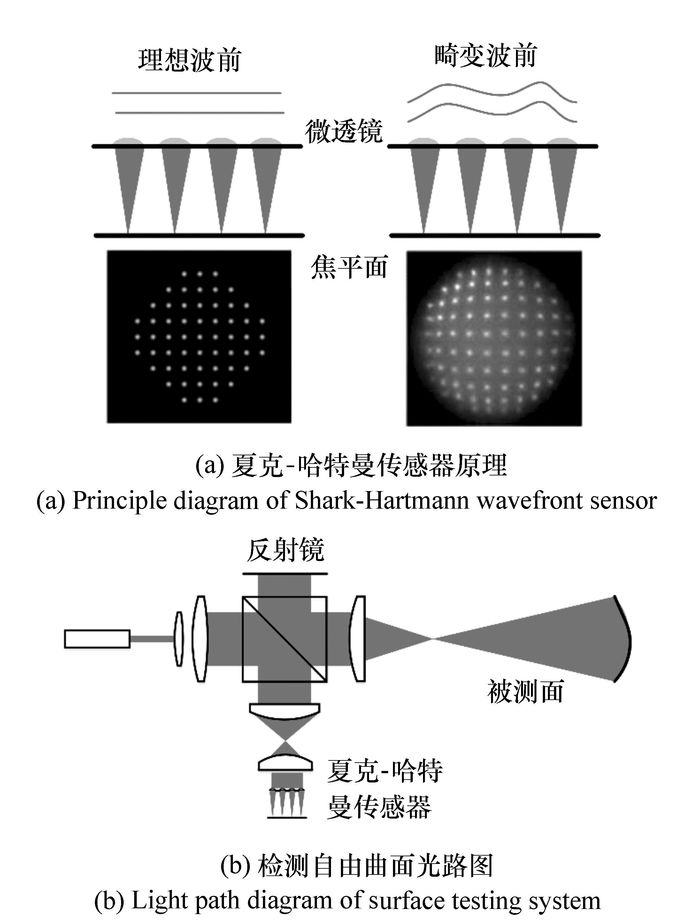
 Abstract
Abstract FullText HTML
FullText HTML PDF 4763KB
PDF 4763KB